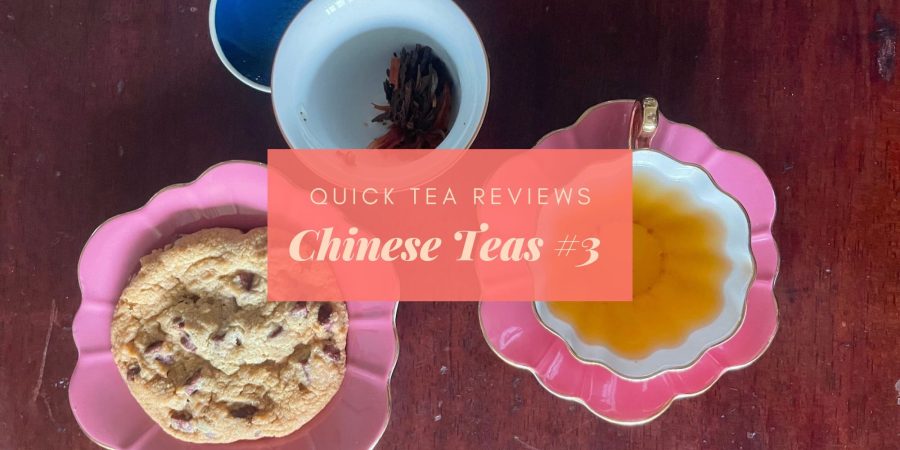So… it’s been a while. In my mind, I knew it was time for a post on all the tea samples that I’ve been drinking, but somehow I never got around to it and now I have nine teas to write about! That’s probably a bit too much for one post so I’ll share five reviews now and save the rest for another post.
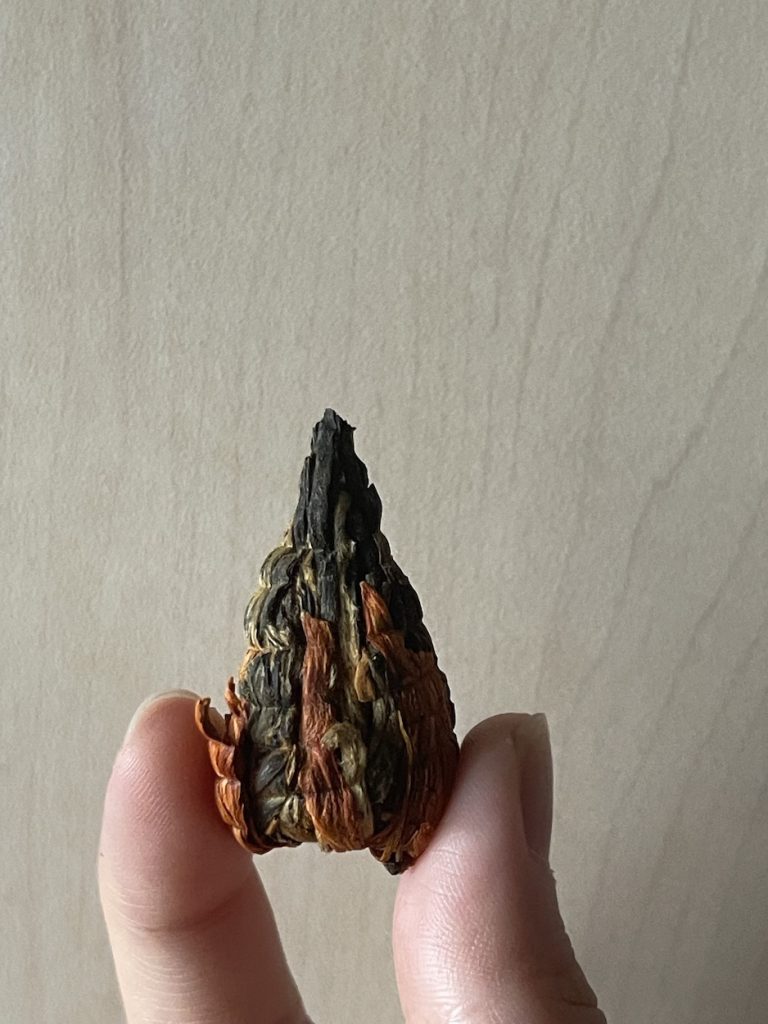
百合宝塔 (Baihe Baota): First up is this very intriguing tea, which caught my attention because of its unusual shape, which gives it the first steep 宝塔 or pagoda part of the name. This is actually a floral black tea, combining lilies with Dianhong tea leaves. The first steep was a light yellow colour and tasted very sweet – it was instantly recognisable as a black tea. The second steep was a light brown colour and the tea was rich and malty, with sweet and floral notes. It’s utterly delicious. The tea opened up after a few steeps and was a delight to look at while steeping the tea, sadly I enjoyed looking at it too much and didn’t take any photos!4 I’m definitely going to be buying this when my tea stash is back to manageable levels, which means sometime next year.
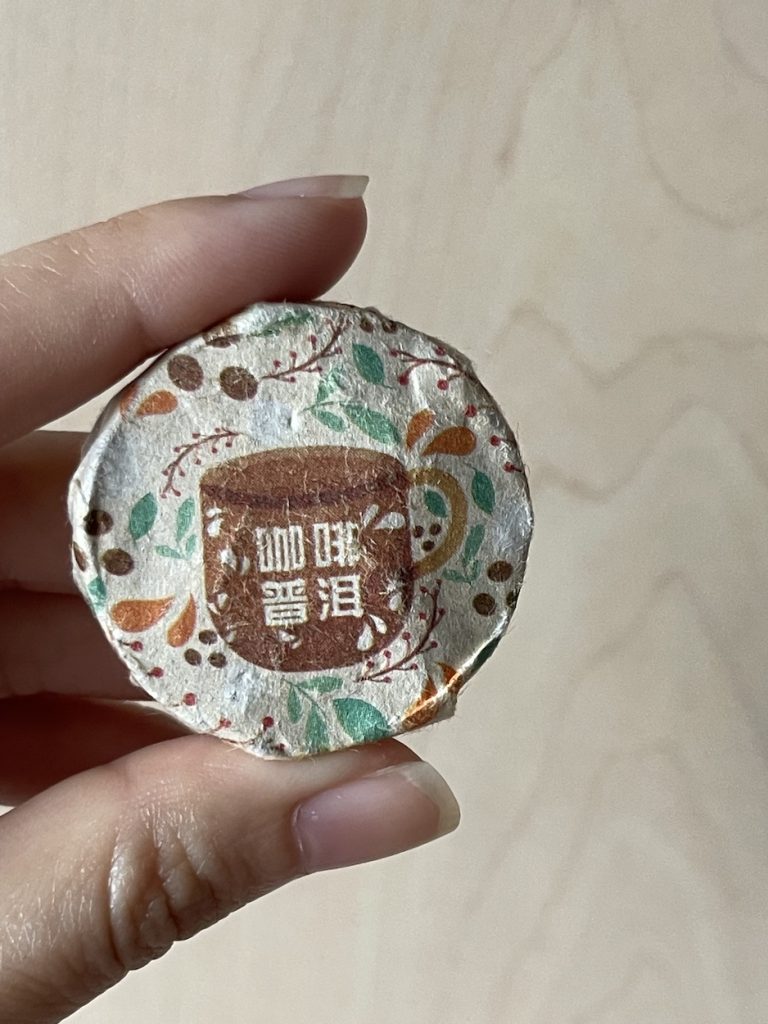
咖啡普洱 (kafei puer): As the name suggests, this is a coffee-themed puer. The tea smells a bit like coffee but thankfully tastes mostly like puer with just a mild coffee note. But as a non-coffee drinker, this was decidedly not up my alley.
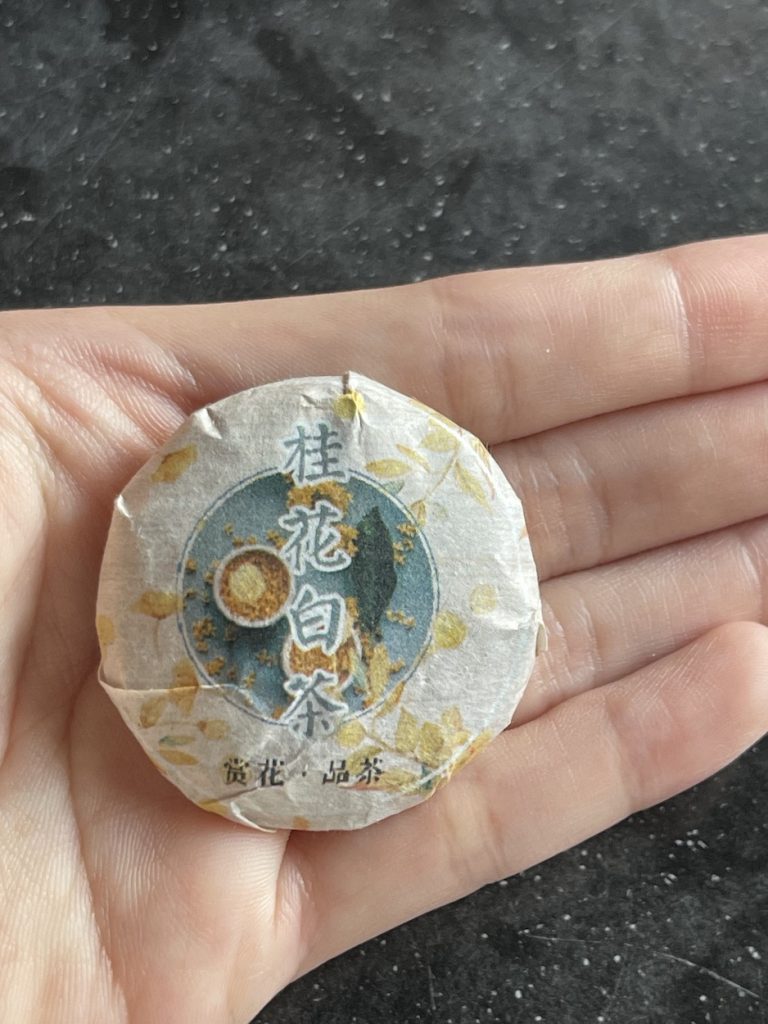
桂花白茶 (Guihua Baicha): This is an osmanthus white tea. The first steep was very light in looks and taste but when I opened the lid to add water for the second steep, I could smell the osmanthus! During the second cup, I could taste the osmanthus at the back of my mouth. For the third cup, I let the tea steep for several minutes untill it was a dark brown, this produced a tea with a very strong and sweet osmanthus taste. I also got a sweet grassy note (that reminds me of white tea) from this and the combination of floral and white tea is very pleasant.
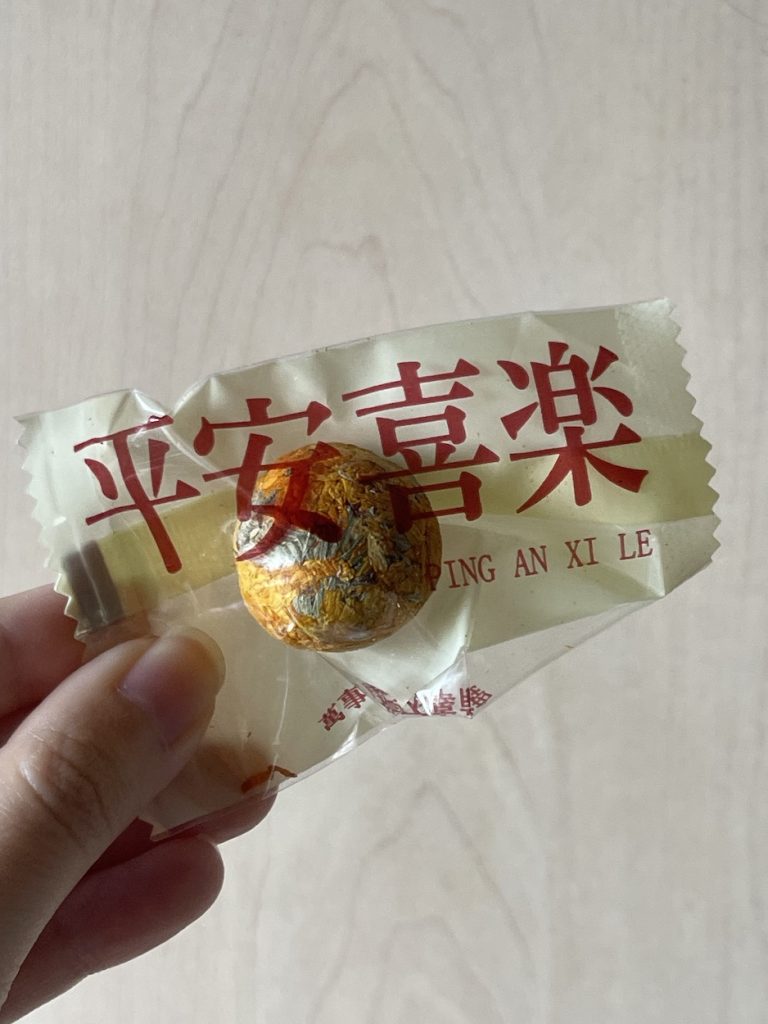
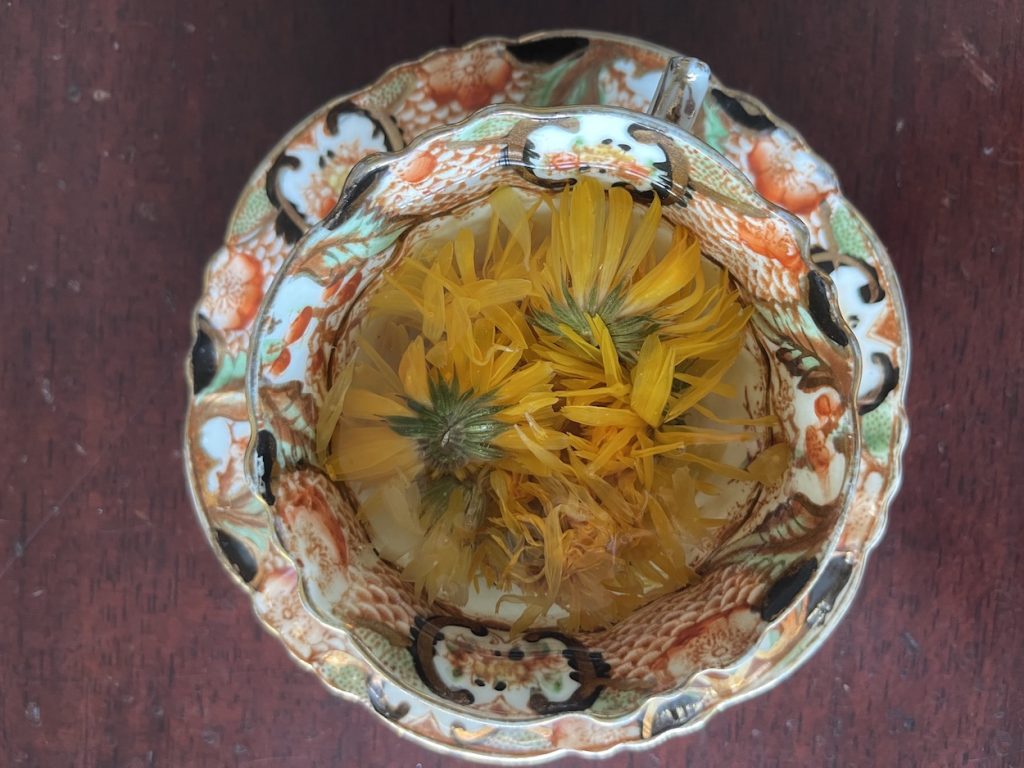
百合生茶: I was actually wondering what this was because all the packet said was 平安喜乐 (peace and happiness). But once I steeped it, it’s pretty clear that this is a tisane. Even though it’s a flower, it tastes slightly herbal and I didn’t quite get any floral notes, which made me question my googling and Chinese skills. The taste of this tea was very mild and I felt it was rather forgettable, even though its appearance was striking.
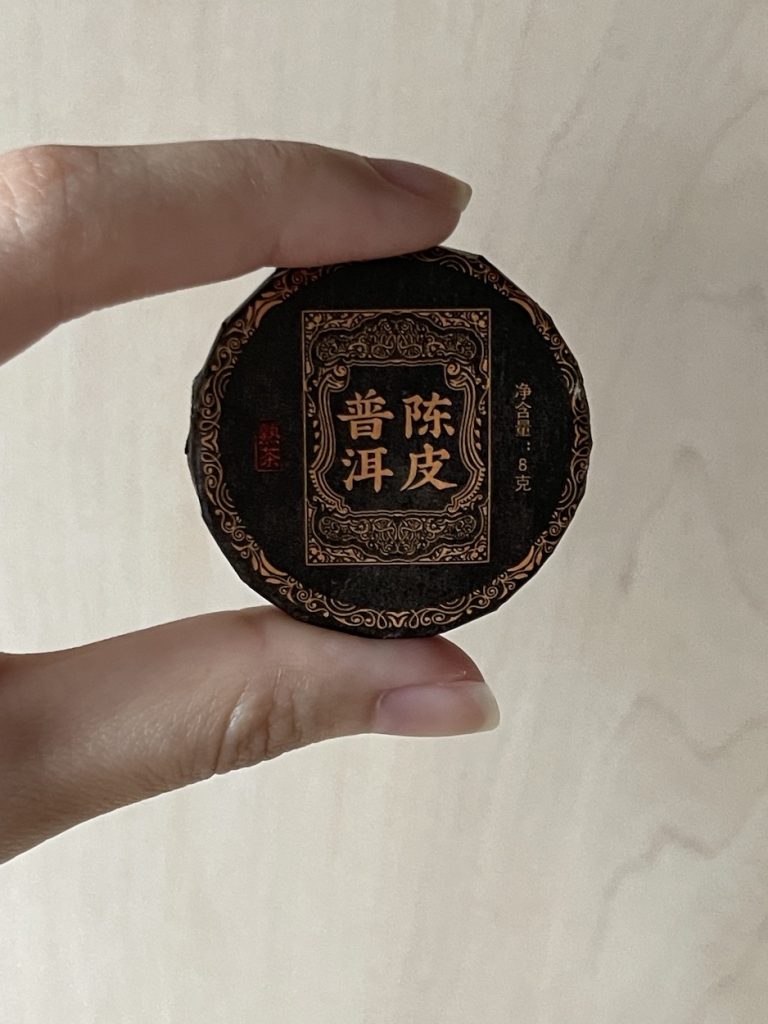
陈皮普洱 (chenpi puer): It’s another chenpi puer! I’m not sure why but this one has a slightly smoky smell to the tea cake. And since it’s a tea cake, I can see the mandarin pieces. The first steep is very light, tasted of sweet starchy notes. I could smell the chenpi when I lifted the lid to add water for the second steep. In later steeps, there was both a citrus note from the chenpi and a smoky note. It took about four steeps to loosen the cake and after that the tea infuses very quickly. The smoky note actually reminds me of the Zhen Cong Shui Xian I bought in Hong Kong years ago and while smoky notes aren’t necessarily bad, they aren’t what I am looking for in a citrus puer.
These were a bit more varied than the last five teas I talked about and I’m really pleased with that! I mean I do like drinking white teas and puers but I bought this box of samples to expand my palate for Chinese teas.
